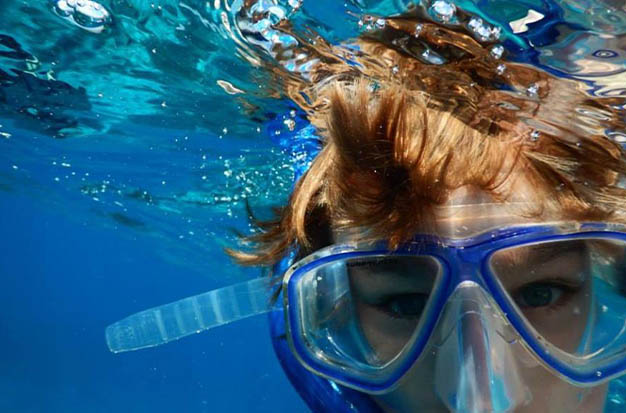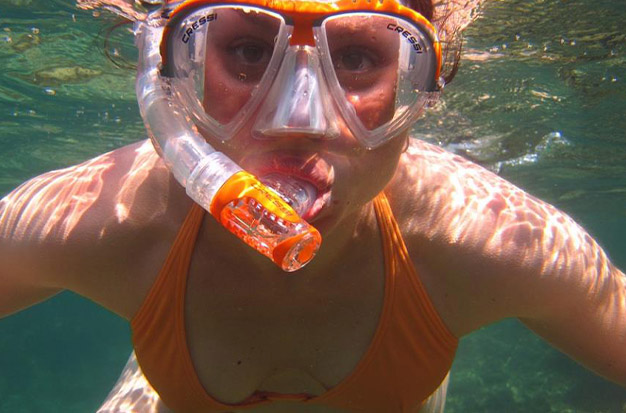Do You Need To Know How To Swim To Snorkel? (A Guide For Non-swimmers)
Do you need to know how to swim in order to snorkel? Is snorkeling safe for non-swimmers?
While on vacation, snorkeling is a super fun way to experience a new and exciting adventure. It also has many health advantages, such as improving breathing and getting some low-impact aerobic exercise. You might be wondering if snorkeling is a good idea for you if you can’t swim.
The majority of the time, snorkeling involves very little swimming. For non-swimmers who want to snorkel, life jackets are always available. While swimming isn’t necessary, you do need to feel secure enough in the water so that you can have fun without getting sick.
Snorkeling offers a variety of amazing sights and experiences. Check out the following advice and suggestions for non-swimmer snorkeling as well as the advantages of snorkeling if you or someone you know is thinking about going snorkeling but cannot swim.
The Benefits Of Snorkeling
If you can’t swim, you might be wondering if going into the water to snorkel is really worth it. Well, here are a few advantages:
- Muscle strengthening. It tones and trims the legs, and snorkeling is a fantastic leg workout. 300 calories can be burned per hour on average.
- Good for your heart. Snorkeling makes your heart stronger and increases heart rate.
- Joint mobility. Since you won’t have to worry about placing too much impact on your joints because you’re in the water, this is a great form of exercise if you have joint pain.
- Stress Relief. Snorkeling boosts your endorphin levels, which improve your mood, and concentrating on your breathing will naturally relax you.
Risks For Non-swimmers
The following snorkeling challenges might be more challenging for you if you don’t feel comfortable in the water.
Surface Waves
Snorkeling can be fairly simple if the water is flat and calm. even for a non-swimmer. The environment, though, is subject to quick change. Waves will be produced if there is any wind. Being pushed around and having your mask and snorkel moved by the waves can be uncomfortable. Additionally, if the waves are high enough to cover your snorkel, water may enter it.
What you should do: Watch the weather conditions. You should get out of the water as soon as you can if you feel uneasy and the weather is changing.
Currents
On the water’s surface, currents can be very powerful. This will cause you to move in that direction, and if the current pushes you out to sea, you might find yourself far from land very quickly. You will struggle and wear out trying to swim against the current if you are not an experienced swimmer.
What you should do: Maintain your composure if a current is pulling you away from the boat or the shore. To attract attention, try standing up in the water and waving your arms around. Yell for help.
Equipment Failure
While there may not necessarily be a problem with the equipment, it can be problematic if it is not performing as you would expect. The most typical issue, which can make you feel uncomfortable, is water leaking into your mask.
What you should do: Learn how to remove a mask while submerged. Push up on the mask frame, inhale air through the snorkel, and blow the water out of your nose.
If water gets inside the snorkel, that can also be a problem. If your snorkel has water in it, you could accidentally breathe it in or swallow it, which could cause choking or, in extreme cases, come dangerously close to drowning.
What you should do: Get familiar with snorkel cleaning. Water can be blown or spit out of the snorkel tube, forcing it up and out of the facepiece. If that doesn’t work, you can stand upright in the water, take the snorkel out of your mouth, and then fill it up before putting it back.
Fear Or Panic
If the issues listed above occur, fear or panic may set in. However, even when everything is going according to plan, you can still experience fear or panic. You might not feel at ease, be a little apprehensive about the fish below you, etc. If you are just beginning to snorkel, this is typical.
Hyperventilating frequently (hyperventilation), tensing up, shaking, and an elevated heart rate are all indications of anxiety.
What you should do: Inform your buddy or friend as soon as you can if you’re not feeling at ease or exhibiting symptoms of anxiety. ‘You may narrow your focus and act irrationally as a result of perceptual narrowing. To prevent this, try to divert your attention (talking to yourself works well), and carefully consider each step to prevent overload.

What To Do In Advance Of Your First Snorkeling Trip?
Finding out how to get ready for your first snorkeling excursion can be difficult, especially if you live in a landlocked region and are not a strong swimmer. Here are some suggestions you can use wherever you are to feel more at ease once you enter the water.
Take Swimming Lessons
Learning to swim is one of the best ways to get ready for your snorkeling trip. While you don’t have to be a strong swimmer to benefit from learning some fundamental skills, being more at ease and secure in the water will increase your comfort and safety.
You should practice controlling your breathing, remaining relaxed, and floating on the water’s surface. Although you don’t need to be an expert swimmer, it helps to be familiar with some common swimming strokes like the breaststroke and freestyle.
You need to concentrate more on your kick when snorkeling. It’s best to float on the surface of the water, keep your arms at your sides, and move forward with your legs and fins when snorkeling in order to maximize efficiency and minimize energy consumption.
Test Out Your Gear Ahead Of Time
Feeling secure in the water greatly depends on your ability to trust your equipment. Choose beginner-friendly gear and get some practice with it before your trip if you’re purchasing your own snorkeling equipment.
The best options for beginners are dry snorkels and full-face snorkel masks. In order to stay afloat and keep your body in the right position, you should also wear a snorkeling vest or use another flotation device. Here are some of our top picks for travel-friendly snorkel sets, which include a mask, snorkel, and fins.
Once you’ve bought your snorkeling gear, make sure it fits properly and familiarize yourself with how everything operates. Once you reach the ocean, you’ll feel confident using it if you do it that way. If you have access to a pool, lake, or pond, you can practice in shallow water there. The alternative is to use a bucket or bathtub at home. These sessions will enable you to practice snorkel breathing in a safe environment.
Practice Deep Breathing Techniques
Learning to breathe deeply will increase your snorkeling safety, keep you calm and relaxed, and prevent dizziness. Breathing through a snorkel requires your lungs to work harder because of the additional respiratory dead space 1. Carbon dioxide can build up in the blood if the snorkel tube is not being used to exchange air effectively. You may experience lightheadedness or a lack of air-breathing due to this buildup.
Fortunately, deep breathing exercises can aid in avoiding these problems. Practice deep, slow breathing before your trip by taking deep breaths in and out. Before practicing the techniques with a snorkel in your mouth while still on land, try it out first without one. Try the same breathing exercises in confined, shallow water while wearing a snorkel once you feel comfortable.
Tips For Non-swimmers Going Snorkeling
You can’t swim, but you really want to try snorkeling. Congratulations, but before you dive into the water, consider these pointers. You can enjoy snorkeling while remaining safe by doing this.
- Make sure you understand how to float in the water. This could involve kicking your legs like an eggbeater or lying on your back like a starfish. You must learn how to keep your face out of the water.
- Always travel with a companion or friend. If you are unable to swim, avoid snorkeling by yourself. It’s crucial to have someone nearby who can help you if the situation changes or you start to feel fatigued.
- Take part in a snorkeling excursion. A snorkel guide who will join you in the water is part of a reputable snorkeling excursion. If you need assistance, they can instruct you on proper snorkeling technique. They can also point out the locations of all the cool fish!
Conclusion
Snorkeling doesn’t even have to involve much actual swimming, so it’s totally possible to go without any swimming experience. It’s crucial that you feel secure enough in the water to avoid freaking out. My beginner’s snorkeling guide is a good place to start.
If you don’t know how to swim and are planning to go snorkeling, keep the environment in mind. Determine whether you are comfortable enough in deep water or if you should stick to shallow waters. Before using your equipment, familiarize yourself with it, and inform your instructor that you are unable to swim so that they can keep an eye on you. In order to avoid potentially dangerous situations, use the buddy system. Also, be aware that even in shallow waters, there is a lot to see. Even first-time snorkelers might be able to participate in a whale shark snorkeling excursion.
The benefits of snorkeling include improving joint mobility by allowing you to exercise without putting undue strain on your joints, strengthening the muscles in your heart and legs, and reducing stress by forcing you to concentrate on your breathing and release endorphins.
Don’t let your inability to swim prevent you from going snorkeling, which is the ultimate adventure, and from seeing marine life.
